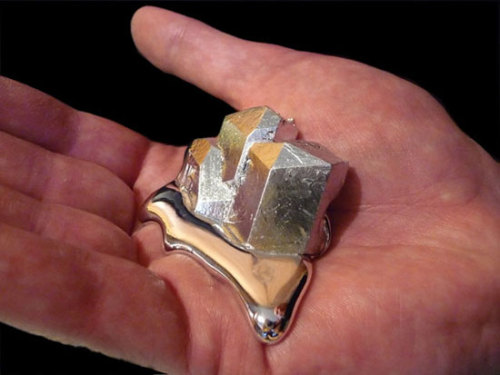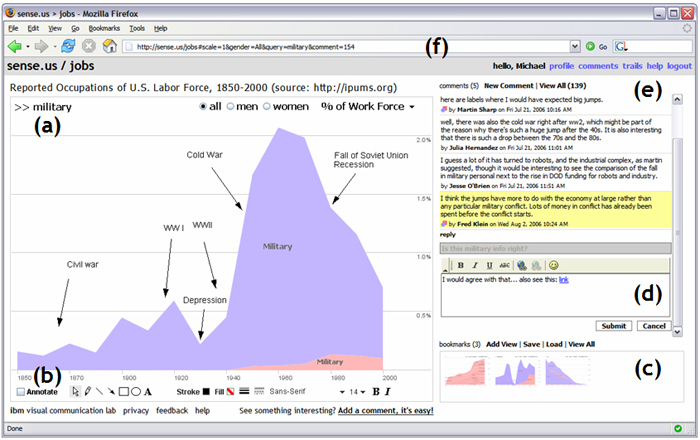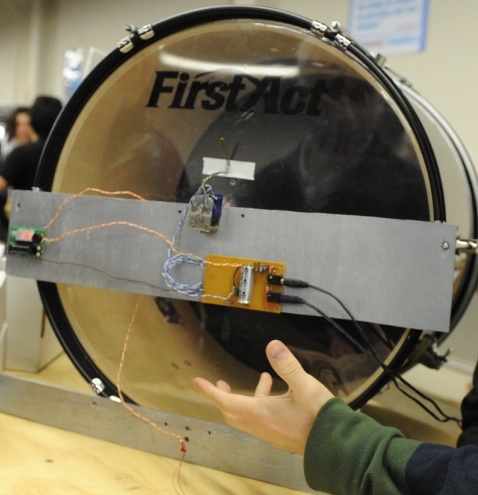
Monday, February 28, 2011
Porting legacy databases to Google App Engine : Thomas Brox Røst
Porting legacy databases to Google App Engine : Thomas Brox Røst: "This is a highly relevant problem if you are porting an existing Django application to the Google App Engine. Luckily, the App Engine SDK includes a bulk data uploader tool that does the job. Let’s work through an example where we use this tool to transfer data from an existing MySQL database onto a Django application running on Google App Engine."
Django Templates - Changing context for an 'include' template - Stack Overflow
Django Templates - Changing context for an 'include' template - Stack Overflow: "{% with table_header1 as table_header %}
{% with table_data1 as table_data %}
{% include 'default_table.html' %}
{% endwith %}
{% endwith %}"
{% with table_data1 as table_data %}
{% include 'default_table.html' %}
{% endwith %}
{% endwith %}"
Django snippets: "Partial Templates" - an alternative to "include"
Django snippets: "Partial Templates" - an alternative to "include": "This snippet adds simple partial support to your templates. You can pass data to the partial, and use it as you would in a regular template. It is different from Django's {% include %}, because it allows you to pass a custom variable (context), instead of reusing the same context for the included template. This decouples the templates from each other and allows for their greater reuse."
AVR Freaks :: View topic - Converting code to be Arduino (ATMEGA328 IC) compatible
AVR Freaks :: View topic - Converting code to be Arduino (ATMEGA328 IC) compatible: "baby-talk programming for pothead"
Arduino: "baby-talk programming for pothead"
love it!
Arduino: "baby-talk programming for pothead"
love it!
Channel API in AppScale - Raj's Blog (nlake44)
Channel API in AppScale - Raj's Blog (nlake44): "Google's newest API is the Channel API which allows for the pushing of messages to a client's javascript code. This blog entry explains AppScale's scalable implementation which is built using ejabberd and strophejs.
There are two sets of APIs for the developer. First is the python API which consists of create_channel(app_client_id) and send_message(app_client_id, message). The create channel API under the covers uses the xmpp service implementation of AppScale. We are able to leverage ejabberd to take care of the distribution and sending of messages for us. The trick here lies in that we must create temporary accounts with each new channel created. This requires garbage collection of channels which live on longer than a prescribe period of time. "
There are two sets of APIs for the developer. First is the python API which consists of create_channel(app_client_id) and send_message(app_client_id, message). The create channel API under the covers uses the xmpp service implementation of AppScale. We are able to leverage ejabberd to take care of the distribution and sending of messages for us. The trick here lies in that we must create temporary accounts with each new channel created. This requires garbage collection of channels which live on longer than a prescribe period of time. "
The sneakernet in git « object.io | All code has costs. Only some code has value.
The sneakernet in git « object.io | All code has costs. Only some code has value.: "git bundle create blog-dump.bundle master
This creates a file blog-dump.bundle with the full history for master, including all parent commits. You now have a single file, which can effectively be mailed, downloaded via SCP or FTP, or simply moved to Dropbox (affiliate link) for safe keeping, or otherwise shared with others. Single files are easy to archive and backup."
This creates a file blog-dump.bundle with the full history for master, including all parent commits. You now have a single file, which can effectively be mailed, downloaded via SCP or FTP, or simply moved to Dropbox (affiliate link) for safe keeping, or otherwise shared with others. Single files are easy to archive and backup."
The Anatomy of a Large-Scale Hypertextual Web Search Engine - Stanford InfoLab Publication Server
The Anatomy of a Large-Scale Hypertextual Web Search Engine - Stanford InfoLab Publication Server: "In this paper, we present Google, a prototype of a large-scale search engine which makes heavy use of the structure present in hypertext. Google is designed to crawl and index the Web efficiently and produce much more satisfying search results than existing systems. The prototype with a full text and hyperlink database of at least 24 million pages is available at http://google.stanford.edu/."
Naked Password - jQuery Plugin to Encourage Stronger Passwords
Naked Password - jQuery Plugin to Encourage Stronger Passwords: "The whole idea of naked password is to encourage your users to enter stronger passwords.
Our beautiful model Sally tastefully removes items of clothing as the password grows stronger."
Our beautiful model Sally tastefully removes items of clothing as the password grows stronger."
Sunday, February 27, 2011
Saturday, February 26, 2011
Django | Model instance reference | Django documentation
Django | Model instance reference | Django documentation: "Regardless of whether you define a primary key field yourself, or let Django supply one for you, each model will have a property called pk. It behaves like a normal attribute on the model, but is actually an alias for whichever attribute is the primary key field for the model. You can read and set this value, just as you would for any other attribute, and it will update the correct field in the model."
The Python Development Server - Google App Engine - Google Code
The Python Development Server - Google App Engine - Google Code: "--clear_datastore
Clears the datastore data and history files before starting the web server."
Clears the datastore data and history files before starting the web server."
GIT: Using the stash
GIT: Using the stash: "So, what do you do? Throw away your current changes to make the patch? Checkout a clean copy of your project to make the changes? No! You just stash your changes away, and make the patch! Afterward you grab your changes back and continue work.
Git features The Stash, which is as much as a good place to store uncommitted changes. When you stash you changes, the will be stored, and your working copy will be reverted to HEAD (the last commit revision) of your code."
Git features The Stash, which is as much as a good place to store uncommitted changes. When you stash you changes, the will be stored, and your working copy will be reverted to HEAD (the last commit revision) of your code."
Friday, February 25, 2011
Explaining IdeaWave, and resolving the TEDx confusion
Explaining IdeaWave, and resolving the TEDx confusion: "As the high financial cost was one of the major reasons that I created IdeaWave, if I was going to make an ideas conference it would be approachable to the masses. IdeaWave is $50 to attend this year. Instead of monetizing off of the attendees, I would monetize off organizational sponsors — organizations that want to support idea generation and innovation. The mission statement for IdeaWave is to engage critical thinkers in the community, with the goal of fostering innovation."
Victoria hotel near Victoria Inner Harbour, Butchard Gardens, Butterfly Gardens, Royal British Columbia Museum - Comfort Hotel & Conference Centre
Thursday, February 24, 2011
Wednesday, February 23, 2011
Full Size Background Image jQuery Plugin: Redux | bavotasan.com
Full Size Background Image jQuery Plugin: Redux | bavotasan.com: "I just made a few changed to this plugin because it was acting a little weird. Tested it in Safari, Chrome and Firefox and it work perfectly now. All you need is an image that you want to have displayed as your background. Once you have that and use the plugin, the image will resize to the full width/height of the browser window. Every time the browser window resizes, so will the background image."
Tuesday, February 22, 2011
Monday, February 21, 2011
Sunday, February 20, 2011
MERCURY – Listening to whales and connecting students |
MERCURY – Listening to whales and connecting students |: "The MERCURY project is a new research initiative that is building a network of hydrophones to listen to the sounds of whales, dolphins and other marine mammals in British Columbia. The network we are building will have small, inexpensive and easily deployable hydrophones and will have data centers located in schools both in urban areas but also in remote regions, and will be both an educational as well as a scientific endeavour, teaching students about whales and computers. It builds on the legacy of the decades of work done by Dr. Paul Spong and Helena Symonds, the founders of OrcaLab, a research station on Hanson Island, a small island near the northern tip of Vancouver Island. The researchers in MERCURY have previously developed The Orchive (http://orchive.cs.uvic.ca), a website that makes available to the public a huge archive of over 20,000 hours of orca vocalizations. The MERCURY researchers are also involved with the VENUS and NEPTUNE projects, a networked installation of ocean observatories. Unlike these massive projects, MERCURY aims to leverage the latest advances in wireless and hydrophone technology to quickly deploy a large network of small and inexpensive remote sensing stations in a bottom-up approach."
Saturday, February 19, 2011
Friday, February 18, 2011
Thursday, February 17, 2011
deploy to appengine get error - Django non-relational | Google Groups
deploy to appengine get error - Django non-relational | Google Groups: "ln -s ../../django-nonrel/django"
deck.cc - articles - Django 1.2 on Google App Engine
deck.cc - articles - Django 1.2 on Google App Engine: "# we create a directory to work with
mkdir django-on-appengine
cd django-on-appengine
# grab and extract the current django release tarball
curl -L http://www.djangoproject.com/download/1.2.1/tarball/ -o Django-1.2.1.tar.gz
tar xzvf Django-1.2.1.tar.gz
# zip the current django source
cd Django-1.2.1
zip -r ../django.zip django/
cd ..
# remove everything except django.zip
rm -rf Django-1.2*"
mkdir django-on-appengine
cd django-on-appengine
# grab and extract the current django release tarball
curl -L http://www.djangoproject.com/download/1.2.1/tarball/ -o Django-1.2.1.tar.gz
tar xzvf Django-1.2.1.tar.gz
# zip the current django source
cd Django-1.2.1
zip -r ../django.zip django/
cd ..
# remove everything except django.zip
rm -rf Django-1.2*"
Wednesday, February 16, 2011
Music - Wikipedia, the free encyclopedia
Music - Wikipedia, the free encyclopedia: "Music is an art form whose medium is sound. Common elements of music are pitch (which governs melody and harmony), rhythm (and its associated concepts tempo, meter, and articulation), dynamics, and the sonic qualities of timbre and texture. The word derives from Greek μουσική (mousike), '(art) of the Muses.'[1]"
What is the science behind how and why the xylophone works.? - Yahoo! Answers
What is the science behind how and why the xylophone works.? - Yahoo! Answers: "The shape and suspension of the sounding bars are important, as are the dimensions of the resonators, if used. The bars are on soft supports about 1/4 to 1/5 of the way from each end. These locations are the nodes (points where no translational motion occurs) of the fundamental vibration mode of the bar. Professional xylophones use undercut bars which tailor the higher harmonics to a pleasing relationship with the fundamental. The first harmonic is an octave plus a fifth above (3 times the frequency of) the fundamental. The resonator is typically a closed tube with the closed (bottom) end located 1/4 wavelength below the sounding bar. (See ref.)"
Basic physics of xylophone and marimba bars | Browse - American Journal of Physics
Basic physics of xylophone and marimba bars | Browse - American Journal of Physics: "The frequency-dependent wave velocity and nonsinusoidal spatial dependence found for transverse waves in finite vibrating bars stands in stark contrast to the solutions to the one-dimensional wave equation, for example for the idealized vibrating string. The difference is particularly important when the resulting vibrations are used to produce music. Here, the appropriate approximate equations for transverse vibrations on a uniform bar are developed and compared to measurements using wooden bars. The results are extended using a simple finite element model to provide a means to predict normal mode behavior in nonuniform wooden bars such as those used for xylophones, marimbas, and related musical instruments. © 2001 American Association of Physics Teachers."
Getting to Grips with Latex - Mathematics - Latex Tutorials by Andrew Roberts
Getting to Grips with Latex - Mathematics - Latex Tutorials by Andrew Roberts: "Roots
Typically, for the majority of times, you are after the square root, which is done easily using the following command: \sqrt{x}. However, this can be generalised to produce a root of any magnitude:
\sqrt[n]{arg}"
Typically, for the majority of times, you are after the square root, which is done easily using the following command: \sqrt{x}. However, this can be generalised to produce a root of any magnitude:
\sqrt[n]{arg}"
Howto:convert aac/mp4 to wav/mp3/ogg on Linux - Linux Multimedia Wiki
Howto:convert aac/mp4 to wav/mp3/ogg on Linux - Linux Multimedia Wiki: "mplayer -ao pcm inputfile.m4a -ao pcm:file='outfile.wav'"
Call for PAPERs
Call for PAPERs: "Topic: Given the emergence of Child Computer Interaction and the ubiquitous application of interactive technology as an educational tool, there is a need to explore how next generation HCI will impact education in the future. Educators are depending on the interaction communities and to deliver technologies that will improve and adapt learning to an ever- changing world. In addition to novel UI concepts, the HCI community needs to examine how these concepts can be matched to contemporary paradigms in educational pedagogy. The classroom is a challenging environment for evaluation, thus new techniques need to be established to prove the value of new HCI interactions in the educational space. This workshop provides a forum to discuss key HCI issues facing next generation education."
How to Password Protect a Directory on Your Website (thesitewizard.com)
How to Password Protect a Directory on Your Website (thesitewizard.com): "htpasswd -c .htpasswd your-user-name"
Tuesday, February 15, 2011
Monday, February 14, 2011
Tellart [stream]
Tellart [stream]: "In celebration of Valentine’s Day, Tellart is launching the Love Song Machine, a musical instrument controlled (by you) through the internet. Visitors to the website can select a song or compose their own, and press play to send the song to the instrument in our Providence office.
The bells are played by a series of solenoids, which are controlled by an Arduino micro-controller. The notes that you submit are processed on our web servers and then sent to the Arduino, while we load up live video and audio so that you can watch your song play. If there are users ahead of you in line, the queuing system will let you know how long you’ve got before you can watch your song."
The bells are played by a series of solenoids, which are controlled by an Arduino micro-controller. The notes that you submit are processed on our web servers and then sent to the Arduino, while we load up live video and audio so that you can watch your song play. If there are users ahead of you in line, the queuing system will let you know how long you’ve got before you can watch your song."
Sunday, February 13, 2011
Thursday, February 10, 2011
Tuesday, February 08, 2011
Monday, February 07, 2011
DryDrop updates App Engine site after pushing to GitHub
DryDrop updates App Engine site after pushing to GitHub: "DryDrop is a tool that lets you host your static site on Google App Engine and update it by pushing to GitHub. Thanks to GitHub post-receive hooks your App Engine site can be updated automatically when you push new content.
DRY principle (set it and forget it)
Zero cost (thanks to Google App Engine)
Zero maintenance (thanks to GitHub)
No Python knowledge needed, but you need to know the basics of Git"
DRY principle (set it and forget it)
Zero cost (thanks to Google App Engine)
Zero maintenance (thanks to GitHub)
No Python knowledge needed, but you need to know the basics of Git"
































